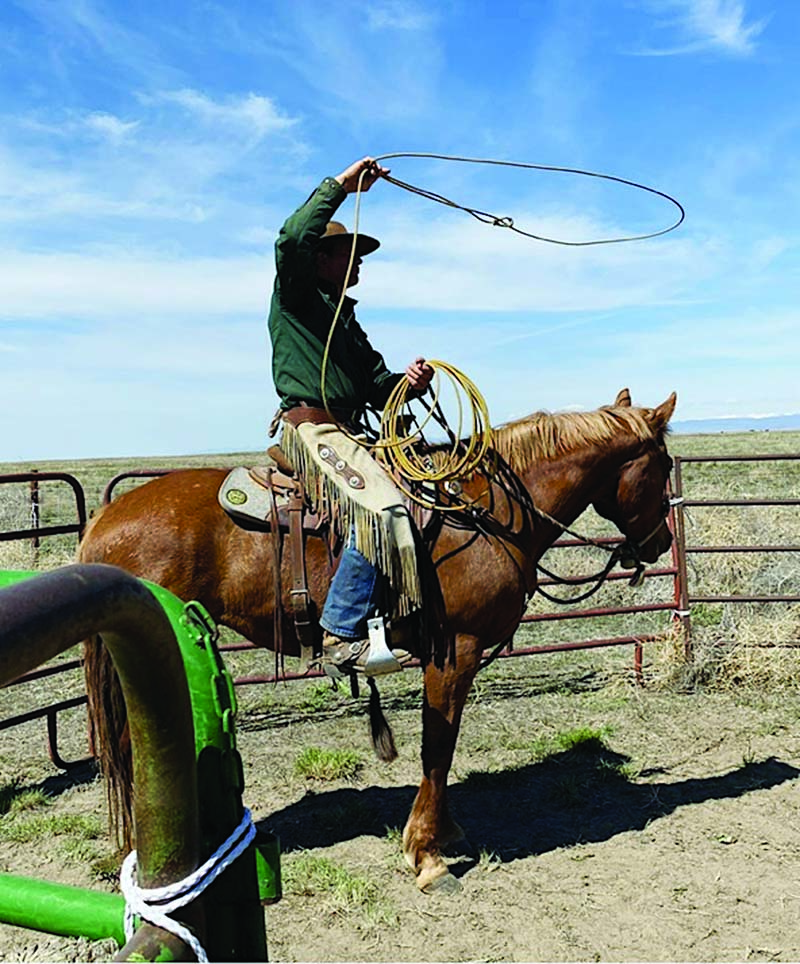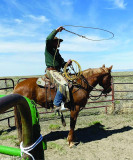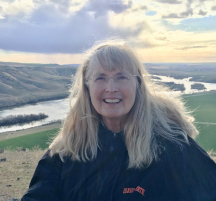No products in the cart.
Cowboy Farmer

It’s Epic
Story and Photo by Diana Hooley
On a recent trip out of state I met a friendly couple who inevitably asked, “What do you do in Idaho?” The short answer is my husband and I are farmers, but I often hesitate to tell people this. I fight the urge to say instead, “We’re ranchers.” Actually, we both farm and ranch but currently our “herd” consists of exactly three-point-five cows (the fraction is a calf). People just seem more impressed when you tell them you live on a ranch. It must be the Yellowstone effect.
In that popular TV western, the main character, John Dutton, is a powerful rancher who rides a beautiful horse. On the farm, we ride deer—John Deere, to be exact. Ranchers wear cool-looking cowboy hats, but the only hats farmers wear are caps with fertilizer company logos emblazoned on them. Though I’m proud we’re farmers, the look and lifestyle of ranching just seems more epic and appealing.
When we were younger, my husband Dale and I owned a substantially larger herd of cattle that we worked every spring before turning them out to pasture. Working the cows basically meant branding and castrating them. First, we rode dirt bikes or four-wheelers to herd them into the corral. Next, we prodded the calves into a metal squeeze-chute called a calf table. When the table was turned, the calf lay on its side, ready for branding and castration.
This is the easy, modern way to work cattle, using motorized vehicles instead of horses to herd them, and calf tables instead of roping to immobilize them. Some ranchers today even employ high-tech gadgets like drones to locate their pairs, cows and calves, on the range.
A Burley cowboy. Diana Hooley.

As farmers and ranchers, we’ve owned a wide variety of animals but we’ve never owned horses. We never had the need for a horse until one spring, when we couldn’t corral a runaway calf on our dirt bikes. It was a big calf, too, four hundred pounds or so. Dale and our hired men tried to circle around it, but the calf broke through every time. Finally, someone said, “Philly could rope that calf—if we had a horse.”
Philemon was our farmhand. He was an older Mexican man whom Dale had a lot of respect for because Philly was skilled in so many ways. For example, he was a weaver. One day he wove himself a lasso from pieces of old knotted-up bailing twine. When the call came to help us rope the runaway calf, Philly used this lasso. The whole enterprise was a little shaky. We had to borrow a horse, Cisco, from our neighbor.
Unfortunately, Cisco had rarely been ridden and was completely out of shape. None of this mattered to Philly, though. He jumped on Cisco’s back, gave the reins a shake, and off the two of them went. They chased the calf up and down gullies and through thick patches of sagebrush and greasewood.
At one point, they dropped so steeply Philly’s hat levitated off his head. He and Cisco disappeared over the river embankment before reemerging, still in hot pursuit of the calf.
“Philly’s lasso was so slack,” Dale chuckled when he reminisced about this later, “he could barely make a loop to rope the calf. It kept sliding into a figure eight.”
We were all amazed and we cheered when Philly finally managed to throw the limp loop over the calf’s neck and drag it to the corral. A few years after this rodeo circus, Philly moved back to Texas to be closer to family. He left us with great memories, though, and a good story to tell about how a farmer can turn into a cowboy, should the need arise.
If you enjoyed this story, please consider supporting us with a SUBSCRIPTION to our print edition, delivered monthly to your doorstep.
This content is available for purchase. Please select from available options.
Purchase Only
Purchase Only


